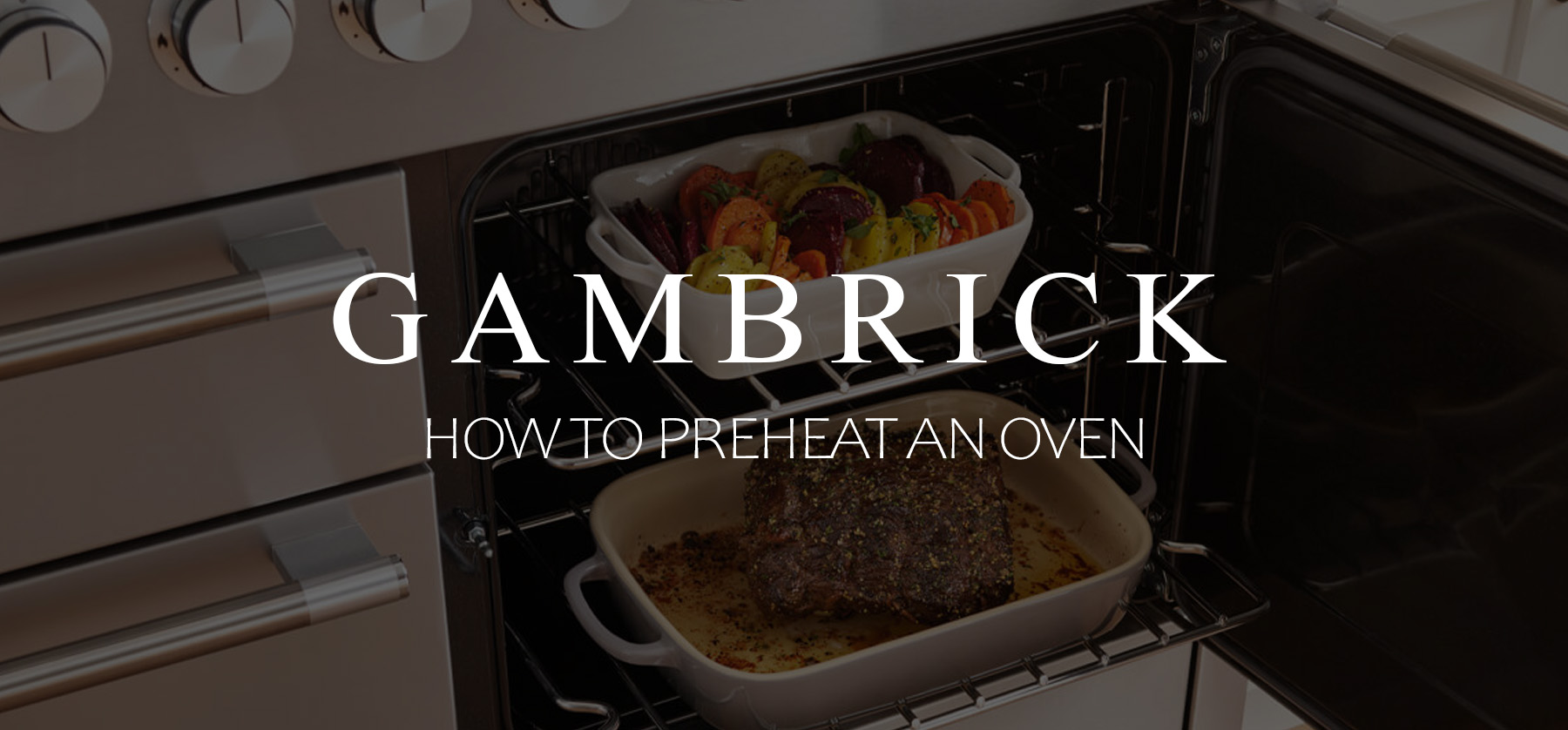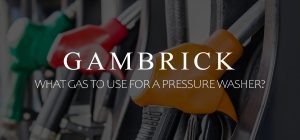How To Preheat An Oven
Preheating an oven is the process of getting it hot before you put your food inside. To do it, simply turn on the oven with the door closed and set the desired temperature. Then wait until the desired temperature is reached. Your oven should display the internal temperature so you know when it’s done preheating. Most modern ovens beep or have lights that go off when the oven is at the correct temperature for cooking. To achieve the best results in baking, it’s essential to preheat your oven to the proper temperature before placing your food in the oven. If you don’t preheat your oven, the temperature won’t be hot enough, and your food won’t cook properly.
Preheating the oven is the act of heating up your oven before placing food inside. It ensures that the oven reaches the right temperature before you begin baking.
Preheating is necessary because ovens require time to reach the required temperature for cooking. It could take several minutes for the average gas oven to heat up sufficiently before you can put food in. If you start cooking before the oven is warmed up, your food won’t cook properly. This is especially important when baking or roasting meats that require a steady and constant temperature.
Most recipes recommend preheating your oven before you start cooking to ensure even heat distribution and proper baking.
How To Preheat An Oven Step By Step
Before you bake anything, your oven must be preheated to the correct temperature. This can take over 20 minutes, depending on the type of oven you have, its quality, and how hot you want the oven. Preheating is the act of turning on your oven and letting it heat up before you put any food in. With most recipes, the oven must be preheated to the desired temperature before you start cooking.
Most recipes require you to turn your oven on first before starting to cook. However, how you preheat an oven and how long it takes depends on the type of oven you have, either gas or electric.
Preheating an Electric Oven
Always preheat your oven before starting to cook. Electric ovens typically need about 30% more time to preheat than a comparable gas oven because electric heating elements get hot slower than a gas burner. However, they can generally reach the same temperature ranges as a gas oven.
- Electric ovens function by using an electrical current to heat a heating element.
- Preheating usually takes about 30% longer than a gas oven.
To preheat an electric oven, follow these simple steps:
- Prepare: Check that the oven racks are in the correct position and remove any unnecessary items from the oven.
- Select Temperature: Set the desired temperature by using the temperature control knob or digital display.
- Turn On: Switch on the oven by pressing the power button or rotating the oven control dial.
- Wait: Allow the electric oven to heat up fully until it reaches the desired temperature. This process typically takes several minutes. Keep an eye on the oven’s built-in temperature indicator or use an oven thermometer to monitor progress.
- Ready to Bake: Once the oven has reached the desired temperature, it is preheated and ready for you to start baking your culinary masterpiece.
Preheating a Gas Oven
Always preheat a gas oven before starting to cook. Gas ovens generally preheat much faster than electric ovens because they use gas to create fire. Once the burners are lit, and the fire is burning, the oven will immediately start to heat up.
- Gas ovens utilize gas as fuel to power a heating element.
- They generally preheat faster than conventional electric ovens.
- However, gas ovens may experience temperature fluctuations.
Follow these steps to preheat a gas oven effectively:
- Prepare: Make sure the oven racks are correctly positioned and remove any unnecessary items from the oven.
- Select Temperature: Set the desired temperature by turning the oven control knob.
- Ignite the Flame: Turn the oven knob to the “Ignite” or “Light” position. If your gas oven has an electric ignition, you may need to press a specific button or switch.
- Hold and Wait: Keep the oven knob turned to the “Ignite” or “Light” position for a few seconds to allow the gas to ignite. After that, release the knob and set it to the desired temperature.
- Preheating Time: Allow the gas oven to preheat fully until it reaches the desired temperature. This process usually takes a few minutes. Keep an eye on the oven’s built-in temperature indicator, or use an oven thermometer to monitor progress.
- Ready to Bake: Once the gas oven has reached the desired temperature, it is preheated and ready for you to start your baking adventure.
How To Make Baking Adjustments: Preheating An Oven At High-Altitude
When baking at high altitudes, it’s important to make adjustments to the recipe for the best results.
Here’s what you need to know:
- Consider Altitude Impact: High altitudes affect baking time, temperature, and ingredients. Keep in mind that most recipes are not designed for high-altitude conditions and will require adjustments.
- Altitude of 3,000 feet or higher: Adjustments are necessary.
- Increase Baking Temperature: Set your oven temperature higher than what the recipe suggests.
- Altitude of 3,000 feet or higher: Increase baking temperature by 15°F to 25°F (9°C to 14°C).
- Altitude between 7,000 and 9,000 feet: Instead of increasing the temperature, consider increasing the baking time.
- Altitude of 9,000 feet or higher: Raise the temperature by 25°F (14°C) as stated in the recipe. Once you place the food in the oven, promptly lower the temperature back to the recipe’s recommended level.
- Decrease Baking Time: Due to the higher temperature, your items will cook faster than the recipe suggests.
- Reduce the baking time by 1 minute for every 6 minutes stated in the recipe.
- For example, if the recipe indicates a baking time of 30 minutes, adjust and bake for 25 minutes instead.
- Optimal Placement: Since ovens are typically warmer towards the bottom, consider placing your dishes closer to the heat source for proper cooking.
Tips To Optimize Preheating Results
To maximize the quality of your baked goods, follow this simple technique to prevent heat loss during the cooking process:
- Preheating Strategy: Preheat your oven to a temperature approximately 75 degrees Fahrenheit (24 degrees Celsius) above the desired cooking temperature.
- For instance, if you want to cook at 375°F (190°C), preheat the oven to 425°F (218°C).
- Timing is Key: Once the oven reaches the higher preheating temperature (in this example, 425°F), promptly place your food inside the oven as quickly as possible so the door doesn’t stay open for too long.
- Adjust the Thermostat: After placing the food inside, immediately lower the oven thermostat to the original desired cooking temperature (in this example, 375°F).
- This step is crucial as it helps prevent excessive heat exposure during the cooking process, especially for recipes with shorter cooking times.
Place a thermal mass, like a baking or pizza stone, on the bottom rack of your oven. The stone will absorb and radiate heat, which helps the oven retain its temperature when you open and close the door.
- Heat Dispersion: Using a thermal mass like a pizza or baking stone in your oven helps evenly distribute heat to your food. This can be very helpful for recipes that require consistent and uniform heat.
- Uneven Baking: If your oven bakes unevenly, you probably have cool and hot spots in the oven. To fix the problem, try placing a baking stone on the bottom rack. The stone will absorb and radiate heat evenly, which can help cook your food more evenly.
Why Is It Important To Preheat Your Oven?
Preheating your oven is important because it gets the oven to the correct temperature before the food goes in. This helps make sure you’re food is evenly cooked to the correct temperature. If you don’t preheat your oven before placing food inside, your food will be cooked at too low a temperature as your oven heats up for the first 5-15 minutes. For some foods, like warming up leftovers, this may not affect the food much. However, for foods that require constant temperatures to kill germs or baked goods, such as chicken, seafood, or brownies, not preheating could ruin the recipe or spread germs.
- When a recipe lists an oven temperature and cooking time, you must first preheat your oven to that temperature and then cook for the required time.
- Preheating an oven helps ensure your food goes from cool to hot more quickly, which can limit the spread of bacteria on foods like chicken, beef, and fish.
- While a lack of preheating won’t harm some foods, other recipes will be ruined if you don’t preheat the oven first.
- Skipping the preheating process doesn’t cook your food faster. While your food goes in the oven sooner, it doesn’t cook much until the temperature gets hot anyway.
- If you skip preheating, your food can become hard, dry, brittle, or rubbery because the temperature wasn’t steady.
Failing to preheat your oven can be dangerous. Meat needs to stay cold to prevent bacteria growth. Then it needs to go directly into a hot oven to kill bacteria. If your oven doesn’t preheat to the correct temperature, you may undercook your meat, which allows bacteria to grow.
Baking Bread & Cookies
Preheating is important when baking bread, cookies, and other foods that use a leavening agent because they need a very hot temperature to produce the right amount of “oven spring.” This is when the leavening agent expands in a short time, which produce puffy holes in your baked goods. If your oven isn’t preheated properly, it won’t be hot enough to jolt the leavening agent into action, and your baking will be dense and heavy instead of light and airy.
To help prevent this problem, preheat your oven before placing your baked good in and add a thermal mass to your oven, such as a pizza or baking stone. A thermal mass helps your oven maintain its temperature when you open and close the door, which reduces temperature fluctuations.
How Preheating An Oven Works
An oven starts to preheat as soon as you turn on the heating elements or gas flame. As the oven air heats up, the insulation built into the walls, floor, ceiling, and oven door keeps the hot air in. As long as the door stays closed, the air will continue to warm until the desired oven temperature is reached. Once the temperature is met, it will stay constant as long as the door stays closed, so open it just long enough to put your food in.
If you want your oven to preheat as fast as possible, keep the door closed tight the entire time. Every time you open the door, you lose heat as cool air rushes in, which delays preheating.
How To Prevent Heat Loss In A Preheated Oven
To prevent heat loss in an oven, preheat about 75 degrees above the temperature you want to cook. When the oven reaches that temperature, put the food in and lower the heat to the correct temperature. When you open the door to put your food in, heat is lost when cool air rushes in. This drops the temperature inside the oven to about 75 degrees. However, you can compensate for the heat loss by getting the oven hotter than you actually want it.
For example, if you want to cook at 350, then preheat to 415. When the oven reaches 415, put the food in and lower the temperature to 350. This will make a big difference when baking because the temperature won’t cool down that much when you open the door to put your pastries in.
How To Prevent Heat Loss & Achieve Even Heat
To prevent heat loss in a preheated oven, add a thermal mass, like a baking stone, to the bottom rack of your oven. The stone will absorb and radiate heat, which helps maintain a steady temperature inside the oven. it also helps the oven reheat faster when you open and close the door.
Adding a thermal mass to your oven also helps disperse heat more evenly and consistently, which is beneficial for some baked goods.
How Long Does It Take For An Oven To Preheat?
The average oven takes 15 to 20 minutes to preheat to 350 – 400 degrees Fahrenheit. However, there’s no set answer for how long it takes to preheat an oven because it depends on the temperature you preheat to, the size of the oven, the type, its fuel source, etc. Hotter temperatures and bigger ovens take longer to preheat than low temperatures and smaller ovens. Preheat time is also affected by the recipe. Baking cookies or brownies requires preheating to 350 degrees which takes around 15 minutes, but a pot roast can require over 20 minutes of preheating to 450 degrees.
- High-end ovens like Wolf, Sub-Zero, and Jen0Air typically preheat faster than lower-cost brands because they have larger burners, reach higher maximum temperatures, and use more gas.
- The age of an oven is also a factor. Older ovens generally preheat a lot slower than modern ovens. This is because modern ovens are more efficient and better insulated, so they lose less heat through the door and outer walls.
You don’t have to worry about how long it takes to preheat an oven if you preheat for too long. Once the oven reaches the correct temperature, it’ll maintain it until you adjust it or turn it off. So don’t worry about preheating for too long. It’s always best to preheat a little longer than not enough.
Preheating Oven Times for Specific Temperature Ranges
How long it takes to preheat an oven depends on several factors. The one that has the most impact is your desired temperature. The hotter you want the oven, the longer it takes to preheat.
Here are the average times it takes to preheat an oven to various temperature ranges:
- 250-300 degrees: Preheating to lower temperatures takes less time. Expect to reach 250-300ºF in approximately 8-10 minutes.
- 300-350 degrees: For temperatures between 300-350ºF, the preheating time may range from 10-15 minutes, depending on your oven type.
- 350-400 degrees: Higher temperatures of 350-400ºF generally require around 15-20 minutes to preheat.
- 400-450+ degrees: The highest temperatures of 400-450ºF or above take the longest to preheat. It may take approximately 20-25 minutes to reach these temperatures.
- Broil Setting: Many full-sized ovens allow for preheating in as little as five minutes when using the broil setting.
- Reaching Higher Temperatures: Higher temperatures may require additional time for the oven to warm up properly.
- General Guideline: Preheating an oven to 350ºF typically takes about 12-15 minutes. Add an extra five minutes for every 100 degrees above 350ºF. However, consult your oven’s manual for precise instructions and preheat times, as different models may vary.
Do Gas Or Electric Ovens Heat Up Faster?
Gas ovens heat up faster than electric ovens because they use gas burners for heat instead of electric heating elements. Burning gas produces heat as soon as you turn the oven on, while electric elements take time to heat up. The average electric oven takes about 30% longer to preheat than a gas oven. For example, preheating a typical gas oven to 300 degrees takes about 10 minutes, but it takes around 13 minutes to preheat the same size electric oven.
- If you want an oven that heats up quickly so you can start cooking faster, use a gas oven.
- Gas ovens heat up faster than electric ovens because they use fire to produce heat instead of a heating element.
- Heating elements get hot when an electric current runs through them, but the process takes time. In contrast, gas is hot the instant it starts burning.
Electric ovens are slower to preheat because heating elements take a while to warm up. The electric coils must get hot before they can heat the air around them.
Some modern electric ovens heat up almost as quickly as their gas counterparts because the coils have been developed to warm faster. However, these models usually use more electricity than a standard electric oven, making them inefficient.
How Can You Preheat An Oven Faster?
The best way to make an oven preheat faster is to turn on the broiler for 3-5 minutes to help heat the oven faster. The broiler has a separate heating element from the oven; turning on both the broiler and the oven helps preheat the oven faster. If your oven has a convection fan setting, turning on the fan as the oven preheats can help it get hot faster because it circulates air inside the oven.
Another great way to preheat an oven faster is to keep the door closed tight. Don’t open the door to check the oven or put things inside, or preheating the oven will take longer. Every time you open your oven, heat is lost when cool air rushes in.
Small Ovens Preheat Faster
There are several factors that affect how fast an oven preheats. Things like the size of the burners and/or heating elements, the size of the oven cavity, and how much insulation the oven door and walls have all impact preheating speeds. In general, smaller ovens take less time to preheat than larger ovens because there’s less air inside the oven to warm.
- Small countertop toaster ovens preheat extremely fast because the volume of air inside the oven compartment is so small.
- A range with two small ovens typically preheats faster than a range with a single oven
Some modern ovens have more or larger heating elements, better insulation, and larger burners so they can preheat faster. However, this makes them heavier, more expensive, and less efficient.
Choose a commercial-quality manufacturer like Wolf or Jen-Air if you want an oven that preheats faster. They generally have larger burners and better insulation than a typical stove, so they heat up faster. However, they’re more expensive to buy and operate than a typical range and can weigh more than twice as much.
How Do You Know When The Oven Is Preheated?
How to know when an oven is preheated depends on the type of oven you have. Most have an indicator light that will go out when the oven reaches the correct temperature. Others have an audible alert or display a temperature reading on a digital display. However, if you have an older oven with none of these features, check the temperature inside the oven with a thermometer.
Different ovens use various indicators to signal when preheating is complete. Here’s what to look for:
- Digital Display: Ovens equipped with a digital display will show the temperature on the screen. To know when preheating is done, simply check the temperature on the display.
- Audible Alert: Many ovens make a tone or beep when the desired temperature is reached, indicating that preheating is complete.
- Light: Some ovens have a light that turns off when preheating is done.
- Symbols: Look for a preheat symbol or indicator on the oven’s LCD screen and/or control panel. Some modern displays will show the full word as “Preheating” or abbreviated “PrE.” When you see the indicator disappear, your oven is preheated and ready for baking.
- Manual Check: If your oven doesn’t have a built-in notifier to tell you when preheating is done, use a thermometer to check the oven’s temperature manually.
Once the oven is preheated to the correct temperature, it’s time to open the oven door and start baking.
Why Does An Oven Take So Long To Preheat?
There are a few factors that can make an oven preheat slower, these include unused racks, room temperature, a voltage or gas line issue, or the door may not be fully closed.
If your oven is taking longer than usual to preheat, here are some common causes to troubleshoot:
- Unused Racks: Check if any unused racks are left inside the oven. Remove them before preheating.
- Open Door: Check to make sure the oven door is completely closed during preheating. Keep the door closed until preheating is complete to maintain the desired temperature.
- Low Room Temperature: Consider the room temperature in your kitchen. If it’s particularly low, it may affect the preheating time of your oven.
- Electric or Gas Issue: Check the gas line and breaker to make sure there are no issues. If the oven isn’t receiving enough gas or electricity, it will be slow to preheat and may not be able to reach the desired temperature.
- Faulty Sensor: Sensors tell your range the temperature inside the oven. if you have a bad sensor, the range may not be able to regulate the temperature inside the oven as it should. This can affect preheating time.
- Oven Size: The larger the oven cavity, the longer the preheating period will take.
Do New Ovens Take Longer To Preheat?
Some newer model ovens have a larger capacity than older ovens, which can take longer to preheat. However, many models also include larger burners, bigger heating elements, and use more gas and/or electricity, which makes them preheat faster than older ovens. So whether or not a new oven preheats faster than an older one depends on the oven you buy. Some take longer, and some preheat faster than an older oven.
When using newer oven models, there are a few important points to keep in mind:
- Increased Capacity: Newer oven models often have a larger capacity compared to older ones. As a result, they may require additional time to fully preheat due to the increased volume of air.
- Initial Use and Smoke: During the first use of some new ovens, you may observe smoke coming out. This is a normal occurrence and usually results from the curing process of certain oven components. The smoke should dissipate after a short while.
- Power: A new commercial quality oven will generally preheat faster when compared to an older standard oven. However, this is because they use more gas/electricity.
How Long Does Preheating To 400 Degrees Take?
Preheating an oven to a temperature between 350-400 degrees Fahrenheit usually takes around 15-20 minutes. However, preheating time can vary depending on the specific oven model oven you have and other factors, such as if your oven is gas or electric, the quality of the oven, its size, and how powerful it is.
Here are a few factors to consider about preheating times:
- Smaller ovens typically preheat faster than larger ones because there’s more air to heat up.
- Commercial ovens preheat faster because they have larger burners or heating elements than a standard oven.
- Higher quality ovens preheat faster because they’re better insulated.
Is It Safe To Put Food In The Oven While Preheating?
It’s generally not safe to put food in the oven while it’s preheating. The temperature inside an oven that’s preheating generally isn’t hot enough to kill germs on meat like fish, poultry, and beef. It’s best to take food out of the fridge and put it directly into a preheated oven to reduce the chance of spreading germs.
Putting food in an oven before it preheats can ruin your recipe. This is especially true for delicate baked desserts like cookies, pies, cakes, and brownies. Food will cook unevenly when it’s placed into a cool oven as it warms up to the desired temperature.
For the best baking results, always place food into the oven after it’s done preheating.
Do I Preheat The Oven With A Tray?
Yes, I recommend preheating your oven with the tray or baking sheet inside. Ovens can have hot spots, meaning certain areas heat up faster than others. Preheating the tray or baking sheet along with the oven helps to minimize these hot spots and ensure more even cooking. By preheating the tray, you create a consistent and evenly heated surface for your food to cook on. This practice helps prevent uneven cooking or browning that may occur if the tray isn’t preheated.
How Long Should I Preheat My Oven?
The amount of time it takes to preheat your oven depends on the temperature you want to reach. As a general rule, it takes about 15-20 minutes for an average oven to reach 3500-400 degrees Fahrenheit, which is the most common temperature range for preheating. Preheating to lower temperatures takes less time. Expect to reach 250-300ºF in approximately 8-10 minutes. The highest temperatures of 400-450ºF or above take the longest to preheat. It may take approximately 20-25 minutes to reach these temperatures if your oven can do it.
Summary: How To Preheat An Oven
Preheating an oven is the process of getting it hot before you put your food inside. To do it, simply turn on the oven with the door closed and set the desired temperature. Then wait until the desired temperature is reached. Your oven should display the internal temperature so you know when it’s done preheating. Most modern ovens beep or have lights that go off when the oven is at the correct temperature for cooking. To achieve the best results in baking, it’s essential to preheat your oven to the proper temperature before placing your food in the oven. If you don’t preheat your oven, the temperature won’t be hot enough, and your food won’t cook properly.
Preheating the oven is the act of heating up your oven before placing food inside. It ensures that the oven reaches the right temperature before you begin baking.
Preheating is necessary because ovens require time to reach the required temperature for cooking. It could take several minutes for the average gas oven to heat up sufficiently before you can put food in. If you start cooking before the oven is warmed up, your food won’t cook properly. This is especially important when baking or roasting meats that require a steady and constant temperature.
Most recipes recommend preheating your oven before you start cooking to ensure even heat distribution and proper baking.
If you have any questions or comments about how to preheat an oven, email any time.





















